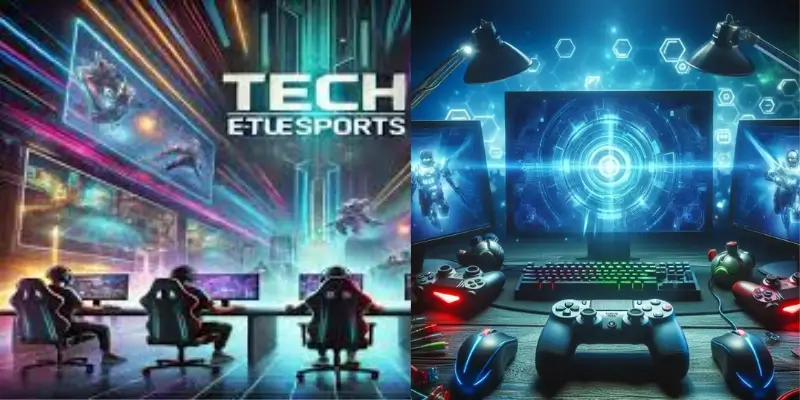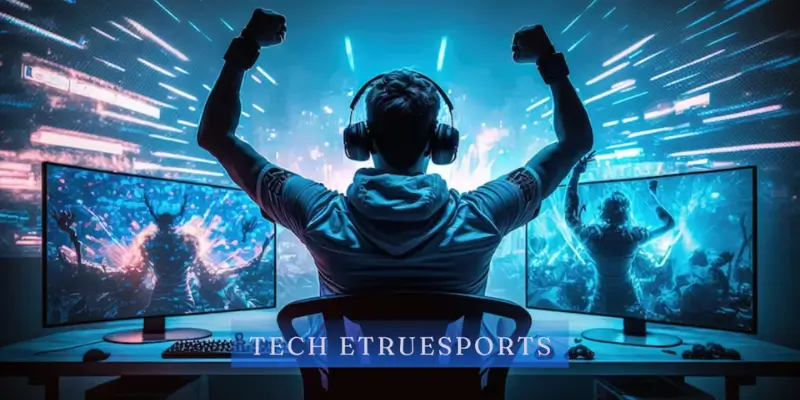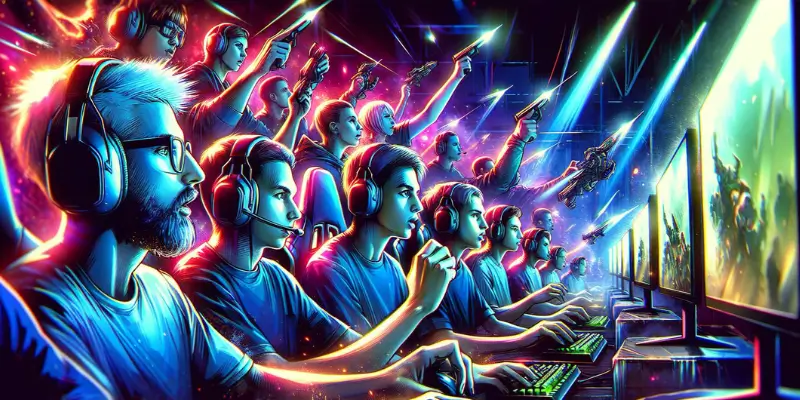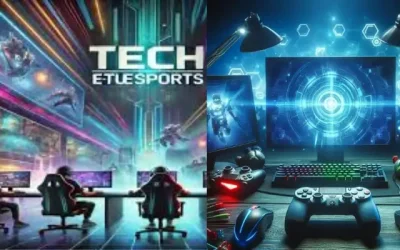
Tech eTrueSports: The Future of Sports Technology and Performance Enhancement

In today’s fast-paced world, technology has become the ultimate game-changer in every industry, and sports are no exception. Tech eTrueSports represents the perfect blend of innovation and athleticism, paving the way for smarter, safer, and more engaging sports experiences.
With advancements in artificial intelligence (AI), wearable sensors, virtual reality (VR), and augmented reality (AR), the sports industry is experiencing an unprecedented transformation.
From enhancing athlete performance to creating immersive fan interactions, Tech eTrueSports stands as a beacon of innovation. This article delves deep into the role of modern technology in revolutionizing sports, exploring its impact, economic significance, and future possibilities.
What is Tech eTrueSports?
Tech eTrueSports is an umbrella term encompassing the use of advanced technologies to improve various aspects of the sports industry. It integrates tools like AI-driven analytics, VR simulations, AR experiences, wearable sensors, and data-driven platforms to optimize athlete performance, fan engagement, and business operations.
The rise of sports technology startups and companies specializing in real-time data analytics, biometric monitoring, and immersive simulations has accelerated this trend.
By leveraging these tools, professional sports leagues, coaches, and e-sports tournament organizers can make data-backed decisions, enhancing strategies and outcomes.
In essence, Tech eTrueSports bridges the gap between technology and athletics, helping teams, players, and organizations unlock their full potential while creating unforgettable fan experiences.

The Role of Artificial Intelligence in Sports Analytics
Artificial intelligence is transforming sports analytics with its ability to process massive datasets and provide actionable insights. AI-driven platforms analyze player performance, identify patterns, and predict game outcomes, allowing teams to make data-informed decisions.
Coaches can fine-tune strategies, while athletes can work on specific weaknesses identified by AI systems. Additionally, AI in sports analytics helps teams scout talent by assessing players’ metrics, like speed, endurance, and skill efficiency.
Professional leagues use AI to enhance fan engagement, offering real-time statistics during broadcasts, making games more interactive and engaging. This combination of data precision and automation revolutionizes how teams compete and succeed.
Read Also: PayByPlateMA
Wearable Technology in Sports Performance
Wearable technology has taken sports performance optimization to the next level. Devices such as smart fitness trackers and biometric sensors monitor athletes’ vital signs, like heart rate, muscle activity, and recovery levels.
These tools provide coaches and trainers with accurate data, enabling them to design personalized training programs that enhance performance. By integrating wearable sensors, teams can also prevent injuries by identifying early warning signs of fatigue or stress.
This sensor-based performance tracking ensures that athletes remain in peak condition, reducing the risk of long-term injuries. Wearable technology is no longer a luxury but a necessity for professional sports leagues seeking consistent excellence.
Virtual Reality (VR) for Sports Training
Virtual reality has opened doors to immersive sports training environments. VR sports simulators offer athletes realistic practice sessions that replicate actual game conditions without the need for physical exertion.
This is particularly beneficial for refining decision-making, reaction times, and mental preparedness. Teams also use VR to analyze opponents’ strategies. Players can experience various in-game scenarios, helping them anticipate moves and develop counter-tactics.
By combining immersive technology with traditional training, athletes gain a competitive edge while reducing physical strain. VR truly represents the future of efficient and intelligent sports preparation.
Augmented Reality (AR) for Enhancing Fan Experiences
Augmented reality has revolutionized the fan experience by bringing games to life like never before. AR-enabled broadcasts provide viewers with real-time overlays of statistics, player profiles, and game highlights, creating an interactive and engaging atmosphere.
Stadiums and sports organizations have also introduced AR mobile apps that allow fans to interact with live events. Imagine pointing your phone at a player and instantly seeing their stats, career highlights, and even VR replays! AR ensures that fans stay connected and engaged, whether they’re at the stadium or watching from home.
How Data Analytics Transforms Sports Strategies
Data-driven sports strategies have become integral to modern coaching and management. By analyzing player movements, team formations, and game patterns, coaches gain deeper insights into strengths and weaknesses.
Tools powered by AI-driven sports analytics process data in real time, allowing teams to adapt their strategies mid-game. For example, basketball coaches can analyze shooting efficiency, while soccer teams can assess passing accuracy and opponent formations.
Data analytics is a game-changer in professional sports leagues, ensuring teams maximize their potential through precise, science-backed decisions.
Preventing Injuries with Advanced Sensor Technology
Athlete injuries are a significant concern for sports teams, but advanced sensor technology is reducing these risks. Wearable sensors monitor stress, muscle fatigue, and biomechanics, alerting coaches to potential injury risks before they occur.
Additionally, AI-powered tools analyze athlete performance trends over time, identifying anomalies that may indicate a looming injury. With athlete injury prevention tech, teams can prioritize player safety while ensuring consistent on-field performance.
The Economic Impact of Sports Technology
The economic impact of sports technology is staggering. The integration of Tech eTrueSports has led to increased revenues for sports organizations, technology startups, and e-sports tournament organizers.
Advanced tools like data analytics platforms, VR simulators, and wearable sensors create new opportunities for monetization. The global sports technology market is projected to reach $31.1 billion by 2024, reflecting its growing significance.
Teams and organizations investing in these innovations are seeing higher returns, from improved fan engagement to enhanced player performance. Tech eTrueSports is not just about innovation—it’s about driving growth.
Global Sports Technology Market Trends
The global market for sports technology is thriving, fueled by advancements in AI, AR, VR, and wearable sensors. Companies specializing in sports analytics platforms and biometric tracking are leading the way, providing cutting-edge tools to leagues, athletes, and fans.
Startups focusing on e-sports innovations are also gaining traction. With the rise of immersive technologies and digital platforms, fans now expect seamless, tech-driven experiences. As technology evolves, the sports industry continues to expand, creating new opportunities for businesses and athletes alike.
eTrueSports Platforms: News, Tournaments, and AI Integration
eTrueSports platforms are reshaping the sports media landscape by offering exclusive news, updates, and tournament coverage. These platforms leverage AI to analyze games, predict outcomes, and provide engaging content for fans.
Additionally, organizers of e-sports tournaments are integrating AI and VR technologies to deliver immersive gaming experiences. With a focus on innovation, eTrueSports platforms ensure fans and players stay connected while benefiting from the latest advancements in sports technology.
Future Innovations in Sports Technology
The future of Tech eTrueSports promises even greater advancements. Emerging technologies like AI-driven performance tracking, biometric monitoring, and AR-enhanced stadium experiences are set to dominate the industry.
Future innovations will focus on making sports safer, smarter, and more engaging. As technology evolves, tools like sports simulation software and smart wearables will become more accessible, benefiting athletes at all levels. Tech eTrueSports is paving the way for an exciting and limitless future.
Enhancing Fan Engagement Through Immersive Experiences
Fan engagement is at the heart of sports technology. Tools like AR broadcasts and VR simulations allow fans to feel closer to the action, whether they’re watching at home or in the stands.
Interactive experiences, such as real-time sports data analytics and personalized content, ensure fans remain emotionally invested in their favorite teams. By combining entertainment with innovation, Tech eTrueSports creates unforgettable moments that strengthen fan loyalty.

Sports Business Opportunities Created by Tech eTrueSports
Tech eTrueSports is not just transforming athletics—it’s creating massive business opportunities. Sports technology startups and wearable sensor manufacturers are capitalizing on the demand for smarter tools.
Professional sports leagues are investing in technologies to enhance revenue streams through improved performance and fan experiences. Additionally, innovations in e-sports and AI analytics offer exciting prospects for growth.
Businesses that embrace sports technology will thrive in this ever-evolving landscape, creating opportunities for athletes, fans, and organizations worldwide.
Read Also: Kashito Toto
Final Thoughts
Tech eTrueSports represents the future of sports innovation, seamlessly blending technology with athletic performance and fan engagement. From AI analytics and wearable sensors to VR training and AR broadcasts, the possibilities are endless.
As sports technology continues to evolve, its impact will only grow, creating smarter athletes, safer games, and unforgettable fan experiences. Tech eTrueSports isn’t just a trend—it’s a revolution that’s here to stay.
FAQs
What is Tech eTrueSports?
Tech eTrueSports refers to the integration of advanced technologies, including AI, VR, AR, and wearable devices, in the sports industry to enhance performance, safety, and fan engagement. It combines innovation with athletics to create smarter training, safer playing environments, and more immersive fan experiences.
How does AI improve sports analytics?
AI enhances sports analytics by processing vast amounts of data from games and player performances, identifying patterns, and providing actionable insights. It helps teams make data-driven decisions regarding strategy, player development, and match predictions. AI can also personalize training by targeting individual weaknesses and strengths.
What role does VR play in sports training?
Virtual reality (VR) allows athletes to immerse themselves in simulated game environments without physical exertion. This technology helps athletes improve their decision-making skills, reaction times, and mental preparation by replicating high-pressure situations, enabling them to train more effectively.
How does wearable tech prevent injuries in athletes?
Wearable technology, such as smart fitness trackers and biometric sensors, monitors vital signs, muscle activity, and movement patterns, alerting coaches and trainers to potential risks of injury. By identifying fatigue or improper mechanics early, wearable devices help athletes avoid overexertion, improving both their safety and longevity.
What are the future trends in sports technology?
Future trends in sports technology include the development of AI-driven performance tracking, more sophisticated biometric monitoring, AR-enhanced stadium experiences, and the continued growth of e-sports innovations. As technology advances, these innovations will revolutionize how athletes train, play, and engage with their fans.









